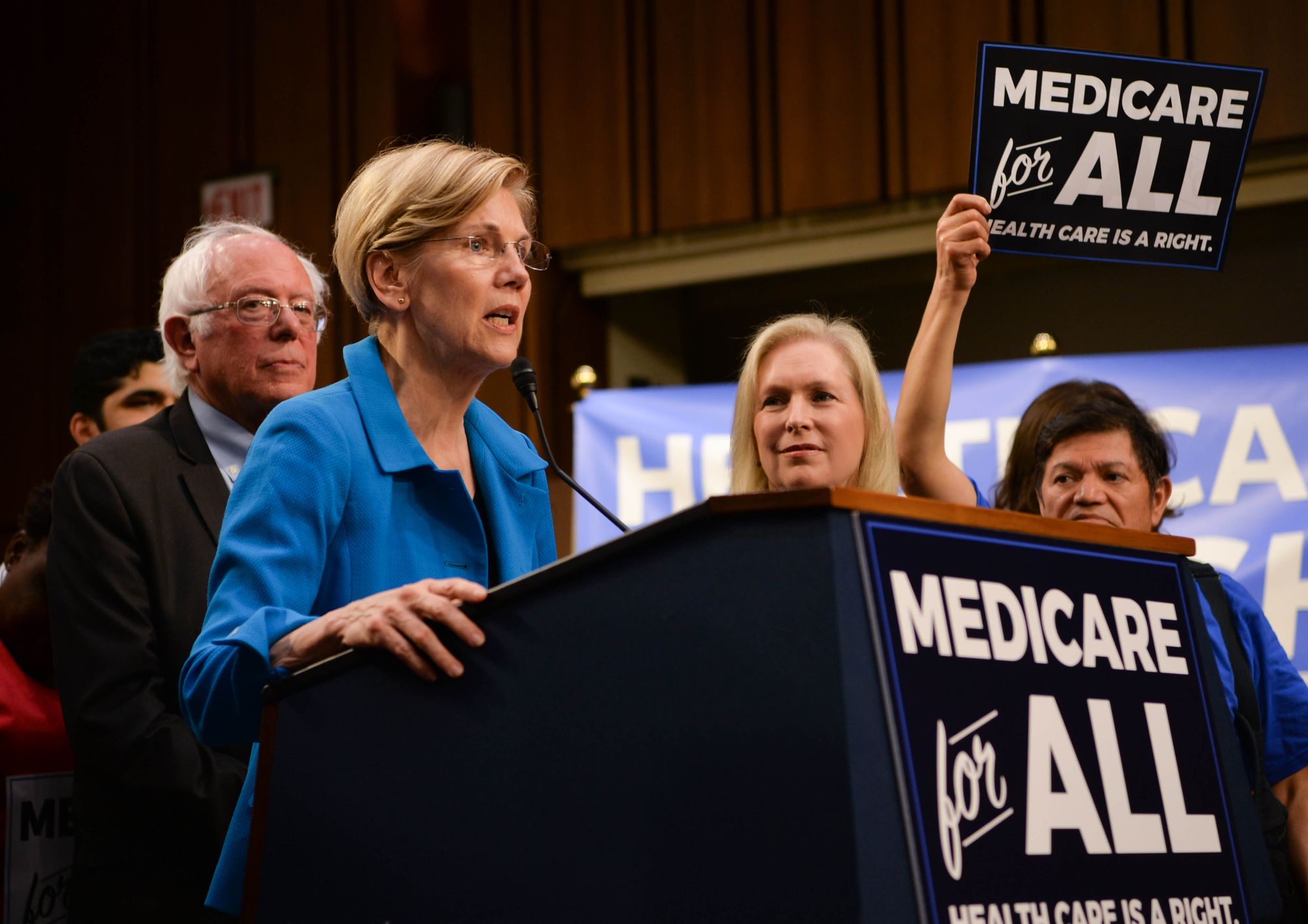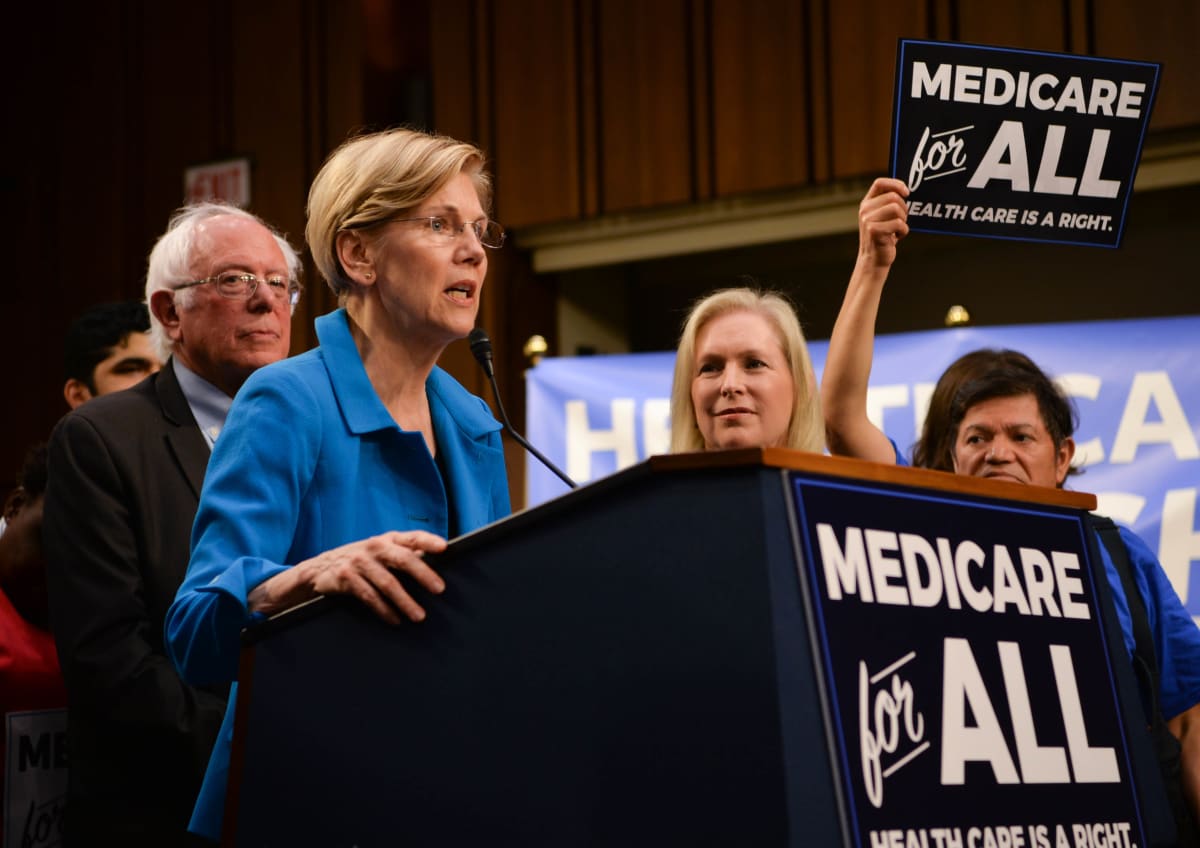
Q: My question is related to health care policy, specifically Medicare-for-all. Could you go through the differences between Medicare-for-all and a hybrid plan that would allow for private insurance to still be an option?
- Hafeez, Pittsburgh, PA.
Tangle: This is a really complex issue, but I’ll try to simplify it best I can. Since health care is the number one issue for voters across party lines, I think it’s worth tackling just this question today.
First, it’s important to understand what Medicare, Medicaid and Obamacare are.
Medicaid is a state and federal program that assists people based on financial need. It’s paid by collecting taxes and — generally speaking — provides health insurance to low-income Americans.
Medicare is a health insurance program for senior citizens (over 65) and people under 65 with certain disabilities. Like social security, every paycheck you get has a “Medicare tax” that takes money out and puts it into the Medicare pool. Then, when you’re 65, you automatically qualify for Medicare benefits regardless of your income. The idea is a lot like social security: you pay into it until you qualify, and then your health insurance is covered through the big pool of money. This is the program most Democrats are talking about “expanding.” Right now, 19 percent of Americans (~60 million people) are covered by Medicare and 14 percent are covered by Medicaid. But Medicare doesn’t make insurance free. Lots of stuff, like nursing homes, dental and vision, aren’t covered. You also still pay monthly premiums and copays.
Obamacare, the controversial health care law that President Barack Obama passed, worked by mandating every American either buy into health insurance or pay a tax. The goal wasn’t to change insurance for people who had it, but to insure those who were uninsured. The basic idea was the healthy people who weren’t buying insurance would have to pay for health insurance (or pay the tax) and that money would help cover all the sick people. Obamacare also provided subsidies for middle-class families that incentivized them to buy government insurance. It also expanded Medicaid to help cover low-income people. The mandate to buy insurance or pay a tax was the major point of contention and is still being challenged in court today. The rollout of Obamacare was also very messy, and while it did help insure millions of uninsured people, it also increased the cost of insurance for lots of Americans. A majority of Americans approve of Obamacare, though the split is nearly even.
Since Medicare is run exclusively by the federal government, and Medicaid is run jointly with states, Congress and presidential candidates (which function as the federal government) mostly talk about expanding Medicare.
Generally speaking, here is the breakdown of how candidates want expand Medicare and the difference between Medicare-for-all and Medicare-for-all-hybrids.
Bernie Sanders and Elizabeth Warren have the most popular and well-known Medicare-for-all plans. These plans would cover every American. These plans would almost entirely eliminate private and employer-provided insurance in four years. Private insurance would still exist for certain things that the Medicare expansion wouldn’t cover, like cosmetic surgery. They would expand Medicare benefits to cover vision and dental, which most Medicare plans don’t cover right now. You wouldn’t pay fees when you go to the doctor and wouldn’t pay a premium, the monthly cost of your health insurance. The only time you’d spend money under Sanders’ plan would be for prescription drugs, which would be capped at $200 a year. This would actually go further than the current Medicare system, which still charges premiums and has costs associated with going to the doctor. Sounds pretty nice, right? Here’s the catch: There also wouldn’t be options for any other kinds of insurance. Also, it’s still unclear how either would pay for their plan in its entirety, but most of their proposals involve raising taxes, taxing the wealthy, imposing fees on banks, taxing health insurers, taxing medical manufacturers, etc. Instead of monthly premiums and deductibles and all that jazz, taxes would go up — pretty much for everyone. For instance, under Sanders’ plan, there’d be a “4% income-based premium paid by households” each year. For a typical family of four earning $50,000, that’d be $844 a year. Families making less than $29,000 a year wouldn’t pay this fee, but it’d be just one way families would be indirectly paying for insurance through taxes and fees. Sanders and Warren’s pitch is simple: the taxes and fees you pay will be a lot less than what you’re paying for health insurance. But until we know exactly how much we’d have to pay in taxes to cover their plans, that’s a hard claim to verify.
After Sanders and Warren, the next level of Medicare-for-all plans vary as “hybrids.” Beto O’Rourke calls his plan “Medicare for America,” and he wants to expand Medicare to people who don’t have any other insurance (approximately 30 million Americans don’t have health insurance) and anyone already on government plans. He’d raise taxes on those making more than $500,000 a year and increase taxes on products like tobacco and alcohol to pay for it. Other plans, like Kamala Harris’s, are slightly more moderate (FWIW, Sen. Harris co-sponsored Bernie’s plan in the Senate, before running for POTUS). Her plan allows private insurers to stay if they follow certain new rules and tries to slowly transition Americans into Medicare-for-all over the course of 10 years. It guarantees coverage for all Americans, like Sanders’ plan. While Sanders has proposed taxing houses earning more than $29,000 a year to cover his plan, Harris raises that number to $100,000, focusing more on the upper-middle class. Pete Buttigieg says he would create a government plan that competes with private insurers and rather than replacing them, but it’s still unclear what his health care plan actually is. Then there is Joe Biden. He wants to keep health insurance plans mostly as they are, but add a wrinkle where people have the “right” to buy into Medicare-like public health insurance programs if they want to. Other, more moderate candidates like former Maryland congressman John Delaney, former Colorado Gov. John Hickenlooper and Montana Gov. Steve Bullock all attacked the Medicare-for-all plans. They say the plans take away American freedoms by forcing people off of private or employer-based insurance, which a large numbers of Americans are satisfied with (about half the country receives insurance from employers, the other half gets it from a public program like Medicare or Medicaid). Delaney says Medicare-for-all plans would cripple rural hospitals which are already losing money, since it would allow the government to pay hospitals and physicians less than they’re paid by private insurers. Sanders says the money hospitals would save on bureaucratic costs — taken over by the government — would insure they could remain profitable and stay open. Analysts seem split on how this would play out.
One final note: there is an unspoken thing happening amidst this debate. In reality, Medicare-for-all is not something that is going to happen in the next few years or maybe even the next decade. Sanders, Warren and all the other candidates understand this. Part of the driving force here is that they’ve moved the goalposts and brought what was once seen as a radical lefty plan into the mainstream, largely thanks to the popularity of Sanders’ Medicare-for-all pitch during the 2016 election. A major function of most of the plans, including many of the hybrids, is that newborn babies would be born into the government-funded Medicare plan. This would crystallize the slow government takeover of the health care industry and, as Democrats are selling it, would guarantee health care as a human right to the next generation. While it’s true that many Americans are satisfied with their employer-provided plans, it’s also true that health care costs are rising faster than wages and unexpected hospital bills are crippling families with debt. That, and the millions of uninsured, are the driving forces behind the popularity of government-run health care.
This breakdown is part of Tangle, an independent, ad-free, non-partisan politics newsletter where I answer reader questions from across the country. If you want to receive content like this in your inbox, press the “Sign up now” button below. You can ask your own questions by emailing isaacmsaul@gmail.com or replying to a newsletter.



Member comments